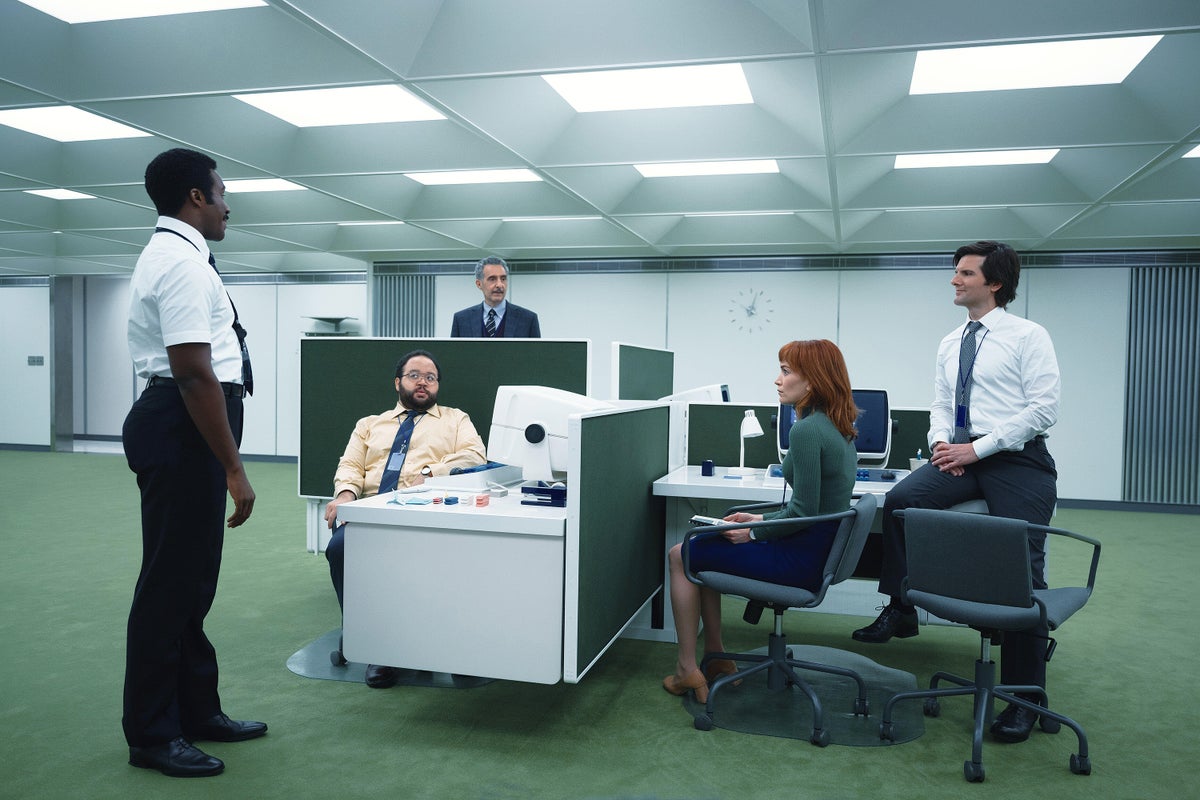What Severance Life Would Really Be Like, According to a Psychologist
In Severance, starring Tramell Tillman, Zach Cherry, John Turturro, Britt Lower, and Adam Scott, characters’ work personas inhabit a world that would be psychologically very stressful.
Editor’s Note: This story contains spoilers for season two of the TV show Severance.
You arrive at work. You shed your belongings and step into a gunmetal gray elevator. The elevator descends, and then, in the blink of an eye, it comes back up. Your workday is over.
In the hit Apple TV+ show Severance, this is the experience of employees of the villainous megacorporation Lumon Industries. These characters have been “severed” by having a chip implanted in their brain, which leaves their outside self, or “outie,” unable to remember anything about their work self, or “innie,” who is in turn completely unaware of their life outside the office.
If you’re enjoying this article, consider supporting our award-winning journalism by subscribing. By purchasing a subscription you are helping to ensure the future of impactful stories about the discoveries and ideas shaping our world today.
An innie’s life is a 9-to-5 job, on repeat, until their outie retires or dies. Every time they leave work, seemingly one moment later, they arrive again the next day. They have no memories of life outside of work, and their world is enclosed within the clinical white walls of their office corridors, with no windows, books or even sleep (napping is expressly forbidden).
So what would life really be like as an innie, and how would their mental health be affected by their constant toil? Scientific American spoke to Martha Newson, an associate professor of psychology at the University of Greenwich in England, about the psychological impacts this strange life would have on severed employees.
For one thing, never seeing the sun can have severe negative effects on mental health, according to Newson.
“Cutting out natural light is a big no-no for mental well-being and potentially physical well-being, too. We don’t have artificial lights that effectively mimic [all the effects of] the sun’s natural spectrum of light wavelengths,” Newson says. “If people took the right vitamins, they may be able to recapture some lost health, but the sense of connection to our wider environment would be irretrievably lost.”
A 2015 study in found that lack of exposure to natural light is related to high levels of cortisol, a stress hormone, and may lead to depressive symptoms. And a study of incarcerated people in China in revealed that those who were denied access to nature had increased levels of depression compared with those who were permitted some exposure to the natural world.
“Day-night cycles could be partially replicated with timers for electric lights,” Newsom says. But “how would we replace the sense of awe when watching an amazing sunset or sunrise? Those moments can give us a tremendous sense of meaning and well-being.”
Whereas Severance’s outies leave their work building at the end of every workday, going home to eat, socialize and sleep, their innie does not experience any of these things. Newson explains that, despite their body getting rest, an innie’s siloed conscious experience of constantly working would rapidly worsen their mental health.
“If the brain is still sleeping, they may be getting at least some of the mental processing they need,” Newson says. “However, without ‘downtime,’ be it leisure or relaxation, I would imagine that people would become chronically stressed and swiftly become depressed.”
In the seventh episode of Severance’s second season, it is revealed that one character—Gemma—has a large number of “innies,” each of whom only experiences a specific scenario on repeat. These situations are things many people find unpleasant or stressful, such as going to the dentist, writing thank-you notes and being on a plane in severe turbulence. For Gemma’s innies, their entire life is spent under extreme stress.
“This could be social support from friends or even strangers,” she explains. “The point is that shared suffering does not necessarily lead to awful outcomes. It can also lead to intense feelings of connection with others and lifelong loyalty. Those we experience life’s toughest challenges with take on a familylike role in our lives.”
Whereas the shared break room torture trauma might bring the regular Lumon employee innies closer together, however, Gemma’s solo innies would have to deal with their struggle all on their own, exacerbating their pain.
All in all, being an innie would likely be a harrowing life. While outies’ experience may seem fine by comparison, they do have to face that constant loss of eight hours of their day, as if they had been anesthetized. They may also experience the emotions from their innie selves leaking through their consciousness—a key point of contention in the show.
“I suspect that outies would still suffer from negativity, emotional pain and stress, as these emotions are part of the human experience and not entirely context-dependent,” Newson says.
As one character states, “Maybe love transcends severance.” Perhaps pain and trauma can, too.
Jess Thomson is a freelance journalist who has written for publications including VICE, The Guardian, The Cut and Inverse, and she previously worked as a science reporter for Newsweek. She holds a Biological Sciences degree from the University of Oxford, where she specialized in animal behavior and ecology.
Source: www.scientificamerican.com
